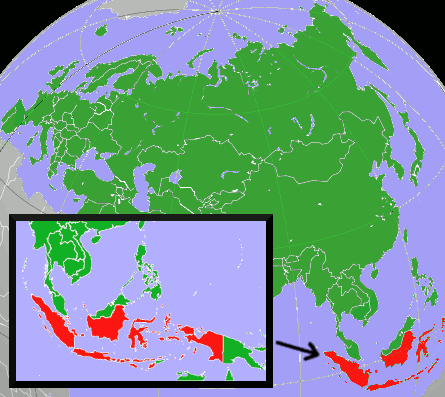
Circle the area on this map

B. Akbar went by only one name, as do many in Indonesia which has more Muslims than any other nation in the world. Indonesia is the world’s fourth most populous nation and has more than 17,000 islands. Canada and Finland have more islands, and the world’s second most populous nation, India, has more people killed by snakes.
C. Indonesia produces 35 million tons of palm oil a year, or 53 percent of the world’s supply. It also is the leading producer of coconuts at about 18 million tons, or 36 percent of the world total. Indonesian farmers have spread severe air pollution throughout the region as they burned away tropical forests to plant more palms.
A. The Indonesian archipelago extends 3,181 miles from east to west and 1,094 miles north to south. Its islands lie along both sides the equator in both the Indian and Pacific oceans.
D. Indonesia’s location on the edges of the three plates makes it the site of 150 active volcanoes and frequent earthquakes. Past volcanic eruptions have caused global climate changes and famines, including one prehistoric eruption believed to have killed most of humanity.